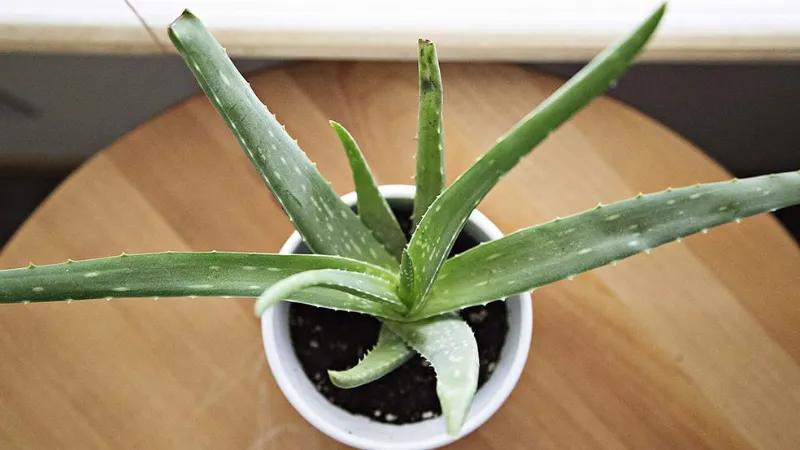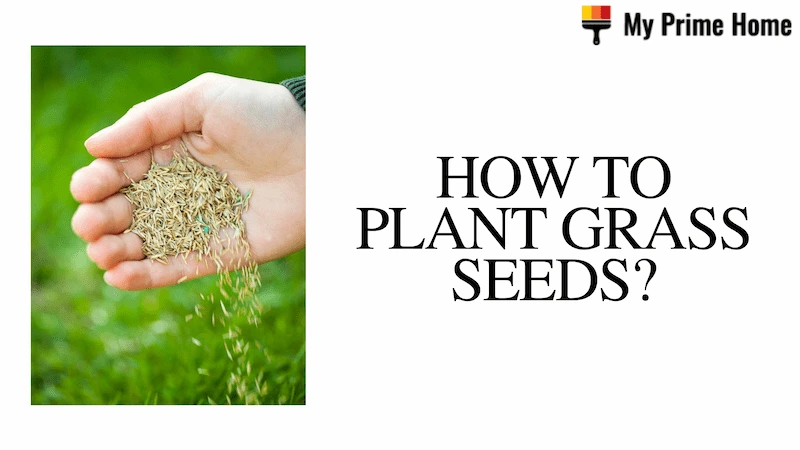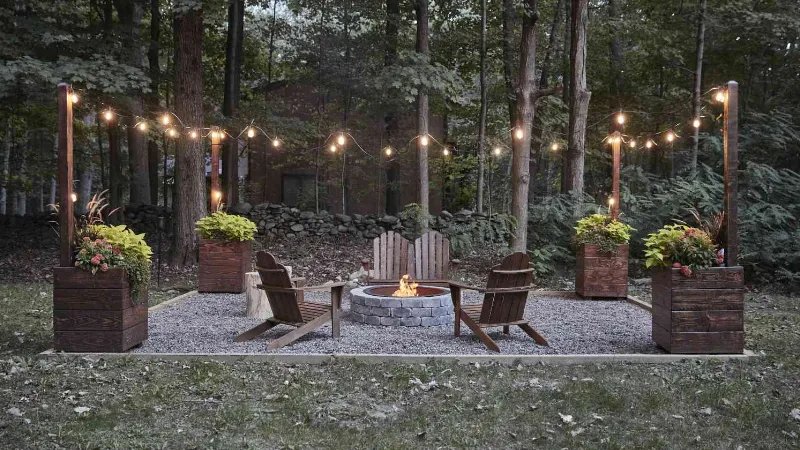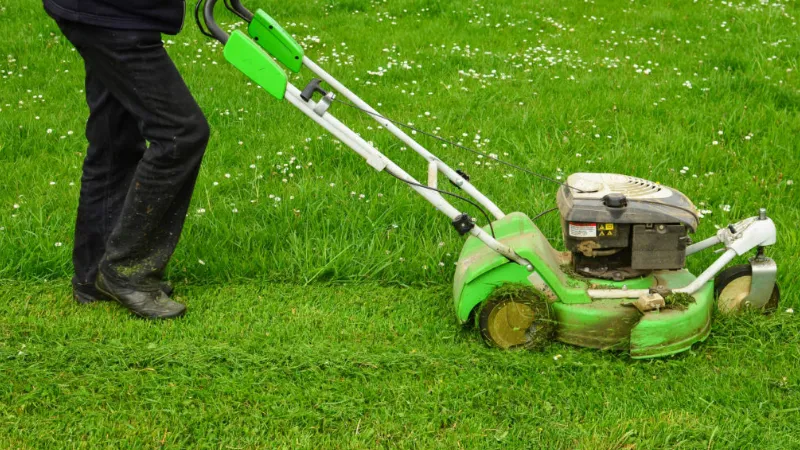Overwatering is a common reason why aloe plants die. You won’t believe it, but this succulent can also be submerged. Perhaps you are struggling with that right now, so let’s talk about it in this article. Below will tell you signs of the underwatered aloe plant and tips on how to revive it.
An underwatered aloe vera will have symptoms such as yellowing, drooping, leaf tip browning, and leaf edge drying. In addition, brown spots will appear, the soil will be dry, and the root will become a fragile structure due to insufficient watering.
Look a little closer to see if this sounds familiar and whether aloe plants can become dehydrated. Keep reading.
Signs of An Underwatered Aloe
Every time a plant is under stress, it manifests itself in various ways, often in the form of morphology. Internal issues will show up as changes in the plant’s structure.
Following are the common signs you’ll most likely notice when an aloe plant is getting dehydrated:
Leaves Turning Yellow
Water serves as the medium to transport essential nutrients from the soil to the different parts of the plant. The roots will have trouble pulling in the necessary nutrients if the soil is dry.
It follows that it is not surprising that plants that receive insufficient water also lack essential nutrients.
Leaf yellowing is frequently a sign of nutrient deficiency. What kind of nutrient is deficient determines the extent of yellowing and how it looks. It takes familiarity to properly diagnose nutrient deficiency in plants. (Source: University of Delaware)
The nutrients that are lacking (N, P, K, and Mg) are immobile if the yellowing affects older leaves.
The yellowing that appears on the younger leaves is caused by the deficiency in immobile nutrients (B, Fe, Mn, Zn, Ca, Cu, and so on).
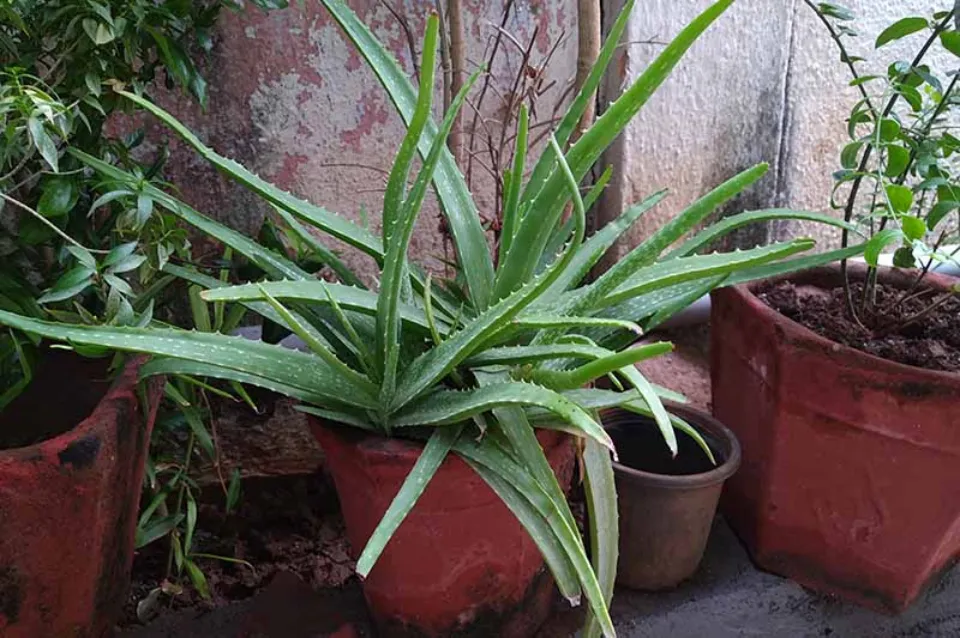
Aloe Drooping
Aloes begin to become limp when they are dehydrated. The plant cells will become weakened or loose due to a lack of water. This implies that the cells will contract and lose their turgid shape.
This is the cause of the under-watered plants’ gradual decomposition into a lifeless structure. Without water, the plant would sag and lose its upright position.
Aloe Have Brown Tips
Aloe’s brown tips have a burnt-leaf appearance. Typically, it appears after excessive fertilization of the plant. However, it might also be a sign of water shortage in the plant.
Because they are furthest from the source of water, leaf tips are most susceptible to wilting.
The moisture that is directed toward the plants will be applied to this area last. Dehydration will therefore strike it first.
Brown and Dry Leaf Edges
The drying and browning of your aloe’s leaf edges is another indication that it has been underwatered.
You would observe that there is still moisture present in the center. The cells on those portions, however, have already died because the edges have already lost water.
The edges of the aloe plant are normally thin and have lesser water content than the other leaf parts. Therefore, during periods of extreme drought, it can easily dry out and turn crisp.
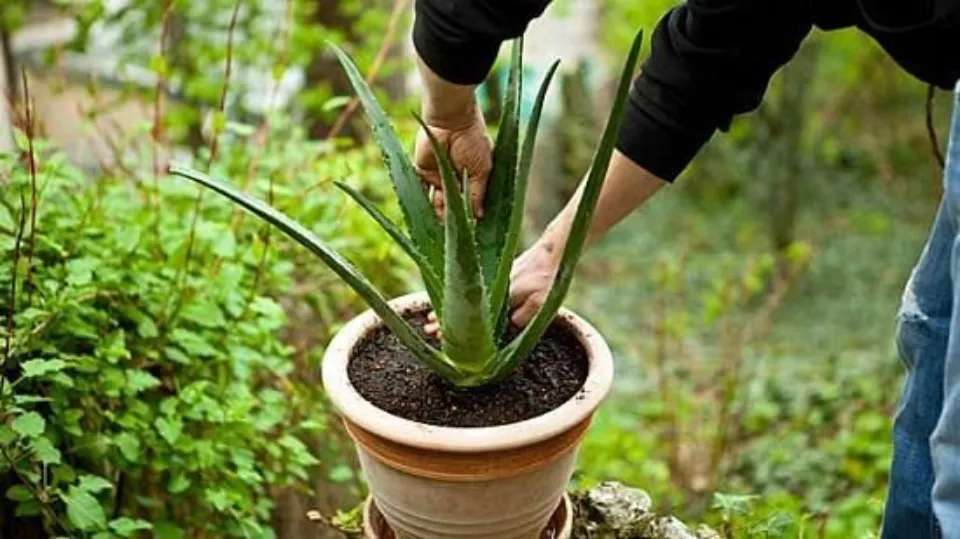
Aloe Leaves Curling
One defense mechanism used by plants to stop moisture loss is the curling of the leaves, specifically inward.
This occurs when there is a high rate of transpiration and the plant wants to conserve its own water. When there is a water shortage, the leaf’s smaller size is advantageous.
The area of the leaves that are curled is smaller. Additionally, some of the stomatal pores are shrunk.
The aloe leaves can reduce the amount of moisture transpired by doing that.
Dry, Brown Spots on the Leaves
Numerous things could be indicated by brown spots on an aloe’s leaves. However, watering issues, including either overwatering or underwatering, are one of the frequent causes.
Although brown spots may appear in either condition, there are noticeable differences in the appearance of these spots.
The brown spots on underwatered aloe would be dry to the touch as opposed to the wet spots on overwatered aloe.
These blotches are made up of dead cells that have been harmed by a lack of moisture.
Potting Soil is Very Dry
Potting soil that is extremely dry is one of the obvious signs of underwatering. And when we use the word “dry,” we don’t just mean that it’s dry on the outside.
Your aloe is at risk of dehydration once the soil dries out all the way to the bottom of the pot.
Through its pores, soil holds water. As a result, the texture and structure of the soil used for potting determines the amount of water it can hold during irrigation. Much more quickly than clay-based soils, sandy soils dry out.
When the potting soil gets very dry over time, the roots will no longer be able to draw water from it.
Dehydration has been allowed to affect the plant. The plant reaches a permanent wilting point if the problem is not solved quickly enough.
Brittle Roots
In essence, roots serve to absorb and transport water from the soil to the other parts of the plant.
The roots experience the most damage during a drought. They would have to work harder to locate a water source.
The roots would shrink as long as the plant was underwater because of a lack of moisture.
Even dry roots could exist. So now you know why they might feel brittle to the touch.
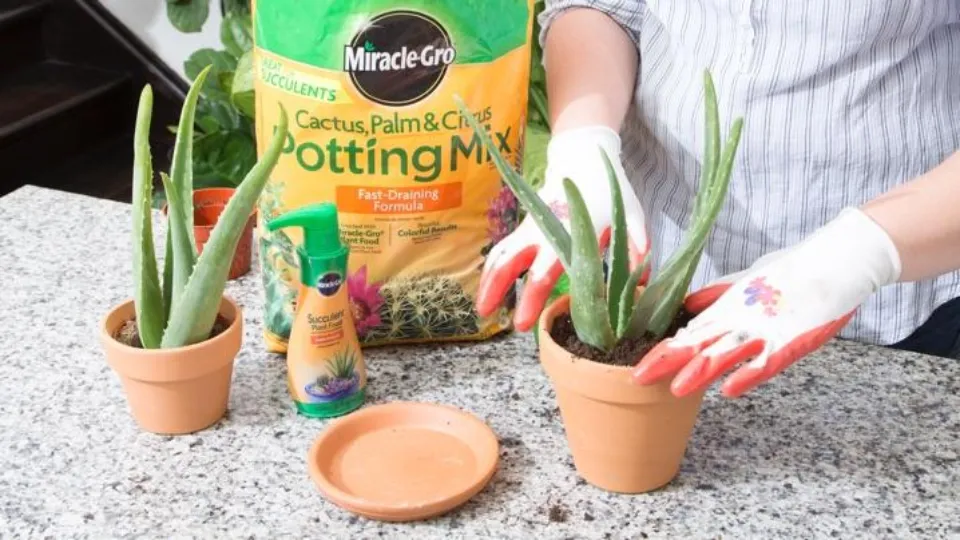
How to Save An Aloe Vera Plant After Underwatering?
Inspect the plant to determine its condition, water it, and relocate it to an area with moderate light if you see signs that your aloe plant is becoming dehydrated from being submerged. An underwatered aloe vera plant will be able to take in the nutrients it needs to perform photosynthesis, store moisture, and regain its firm structure fairly quickly after a period of underwatering, depending on the severity of dehydration damage. After all, these plants have been adjusting to drought conditions for thousands of years!
Water Your Aloe Plant
You can either soak the soil of your underwatered aloe plant and set it aside to absorb the water and drain any excess, or you can use a spray bottle to provide it with less water more frequently to help it recover. When watering the aloe plant as usual, using a spray bottle will lessen your chance of overwatering it. Make sure the plant’s leaves don’t remain consistently wet if you use a spray bottle.
Remove Damaged Leaves
When given water, yellow leaves typically turn back to green after a few days, though this recovery time varies depending on the plant’s size and degree of dehydration. Dehydration can cause stress to plant cells and tissue, which some leaves may not be able to recover from, whether as a result of the lack of moisture or from excessive bending. In order to focus energy on promoting healthy growth of the remaining aloe plant parts, remove any damaged or dried aloe vera leaves.
Set the Plant in Indirect Sunlight
How much sun do aloe vera plants need? Aloe plants recovering from dehydration should be put in indirect light or (temporarily) a location with moderate light. As it recovers, this will assist the plant in holding onto moisture. In spite of being on a regular schedule, plants may not receive enough water if exposed to direct sunlight, which can hasten the process of dehydration. Warm temperatures and direct sunlight evaporate water from the soil, in addition to encouraging transpiration from the plant itself.
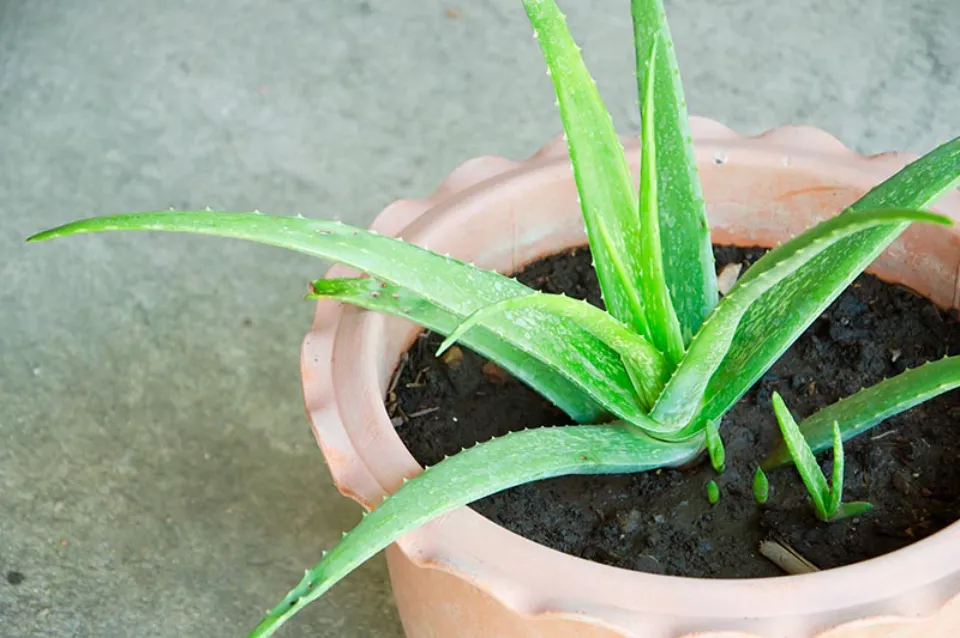
Support Weak Leaves
Project Perk-Up: Aloe leaves will undoubtedly benefit from some support while the plant heals if they have weakened to the point where they droop and bend. While the aloe regains its strength and is less stressed, you can set up a small string fence around it in the pot to hold the leaves vertically.
What you will need:
- String
- 4-5 bamboo or wood sticks about 10 inches long
- Scissors
Gently bring the droopy leaves up to the center, and tie them together temporarily while you build the support around it. Create a small fence-like structure around the aloe by inserting 4-5 bamboo poles into the pot with the plant and tying string between each pole. To keep the aloe plant upright while it heals, construct three to four levels of string fencing around it.
Can You Underwater An Aloe Plant?
It is very likely that an aloe plant will experience the effects of underwatering because it requires little maintenance and is self-sufficient. Aloe vera plants typically require watering once every week for young plants and every two to three weeks for adults. Aloe age, climate, pot size, and soil type can all make watering issues worse.
You’ll be able to tell the difference between a plant’s lush leaves and those that need watering when your plant starts to show signs of dehydration. Take one leaf and gently press it between your two fingers to see if your aloe is submerged. If it feels turgid and fleshy, it’s well watered; but if the leaf is brittle, yellow, or brown and appears limp, it’s a sign the plant is underwatered.
Altering the potting soil and watering schedule for it may be necessary.
How to Tell Your Aloe Plant Needs Watering?
The first indication of a dehydrated aloe vera is puckering leaves that are more likely to wither. A rose flower that isn’t submerged in water is a good analogy. It will shrivel up and lose its flavor after a few days. The same applies to aloe vera, but the difference is that aloe is hardier. Depending on how severely they have been dehydrated, the leaves eventually turn from yellow to brown.
Total soil drying out is another warning sign. Don’t focus on the surface when determining the dryness of the soil. Make sure you reach the soil at the bottom of the pot. Change the soil, pot, or alter your watering schedule if it is completely dry.
Other than being mindful of watering frequency, aloe growers don’t need to worry about much. Your succulent will endure the test of time if you adhere to a set aloe vera water schedule.
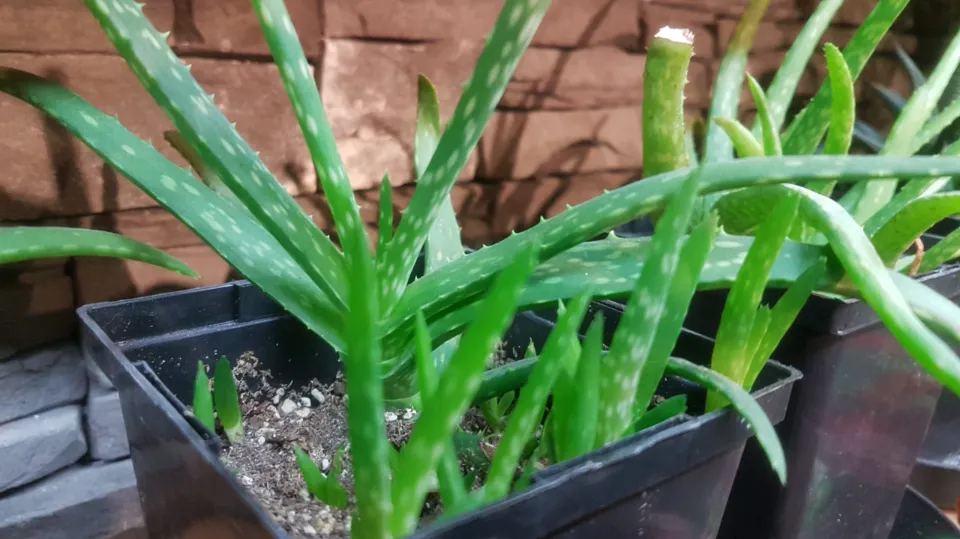
How Often Do You Need to Water Your Aloe?
It can be a little challenging to water plants, especially succulents. Despite being tolerant of drought, you cannot simply leave them to dry out for a long time.
As soon as possible after their moisture level reaches its lowest, you must supply water.
The frequency of your watering should be influenced by a number of variables. These are the following:
Prevailing Season
You need to think about the season first. Does it feel hot and sunny outside? Therefore, more watering is required because moisture evaporation is occurring more quickly under these circumstances.
You must not water your aloe if the weather is too chilly and wet because it won’t need it. Once more, before you do it, check the moisture content of the soil beneath the surface.
Size of Plant
Next, consider the size of the aloe plant. Compared to mature aloe vera, young aloe vera will need relatively little water. Adjust the amount of water over time as the plant grows.
Type of Pots Used
Due to its tiny pores, terra cotta pots frequently absorb moisture. As a result, it keeps the plant from being overwatered. But more frequent watering is required.
Because water is not absorbed by the surface intact in plastic pots, the soil will retain more moisture. This is a good way to avoid submersion, especially if you plan to leave your aloe for a long time.
Location of the Plant
If you keep your aloe vera plant outside will require more watering than the ones located indoors. This is so because outside’s environmental conditions are more severe than inside’s.
Your aloe vera plants are more protected and under better control indoors.
You might need some practice to get your aloes’ watering schedule just right. You will occasionally make mistakes while moving forward. The malpractices may even cause harm to your plant.
Learning the ins and outs of proper watering, however, requires a lot of patience. Just keep doing it until you are an expert at caring for your aloe plants.
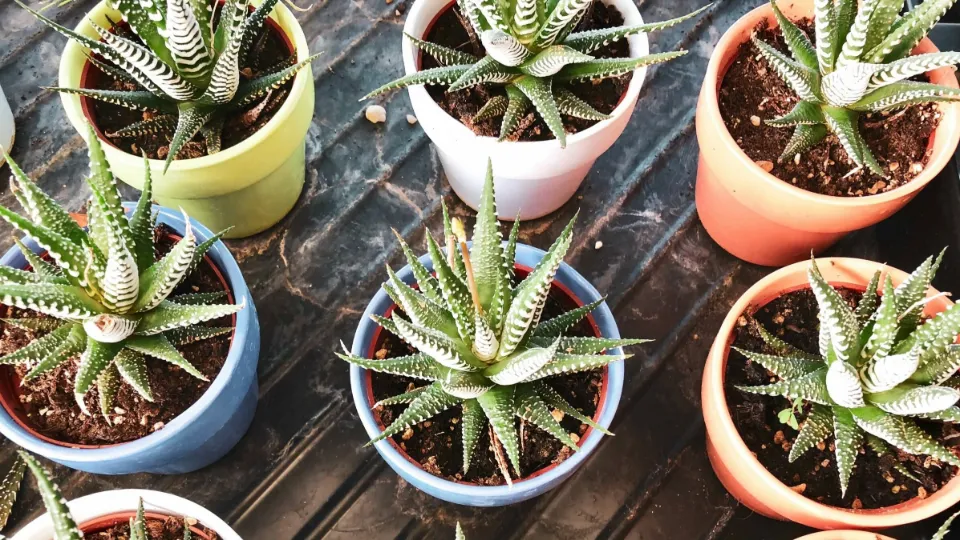
FAQs
Can I Save An Overwatered Aloe Plant?
Take action if you notice that the leaves on your aloe plant are yellowing or becoming floppy; otherwise, the plant will die. It may be sufficient to simply reduce your watering schedule if you can spot an overwatered aloe plant early on. If not, you’ll need to repot them and prune any rotten roots.
How Do I Know If My Aloe Plant is Dying?
It’s time to alter your plant care routine if your aloe vera plant begins to droop, develop mushy leaves, or turn yellow and brown. The most frequent causes of your Aloe starting to wilt or die include overwatering, root rot, and sunburn.
Do Aloe Plants Need Direct Sunlight?
It is critical that you place your aloe in a window where it will receive a minimum of six hours of sunlight per day. Your succulent will start to stretch and lose its lovely, compact form if it isn’t exposed to long-term, direct light. As the stem ages, it might collapse.
Should You Mist Aloe?
Avoid misting your Aloe vera – it doesn’t need it and excessive could cause rot. Once or twice a year, you can spray water on the leaves to remove dust and dirt.
Summary: Underwatered Aloe Plant
A submerged aloe plant will exhibit droopy, curling leaves, very dry potting soil, and leaves that are turning brown at the tips. The aloe vera plant can be saved if its pot is removed, the roots submerged in water for 48 hours to help the plant recover, and then the plant is replanted in a new container with a well-draining potting soil.
If you have any questions, please leave a comment. My Prime Home tries to give you the best home improvement information. Don’t forget to share the post. Thank you for reading.
Read about
